This past summer, dsm hosted a virtual panel discussion on the mental health crisis among youths, which the pandemic and its ensuing disruptions have only intensified. We focused on hope, recovery and resources by exploring what parents and community members—and the kids themselves—can do to address the mental health challenges today’s young people are experiencing.
The panel was hosted by Andrew Allen, president and CEO of YSS, and Suzanna de Baca, president and CEO of Business Publications Corp. Panelists were Dr. Sasha Khosravi, Amber Rand, Pat Rogness and Dr. Teri Wahlig.
Youths In Recovery Panelists

1. Co-host Andrew Allen
President and CEO of YSS, an Ames-based nonprofit organization that serves children through prevention programs, counseling, treatment and shelter.
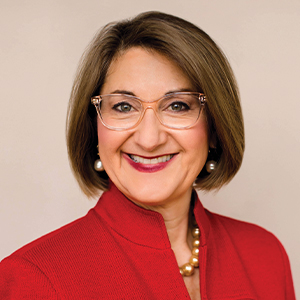
2. Co-host Suzanna de Baca
President and CEO of Business Publications Corp., the parent company of dsm magazine.
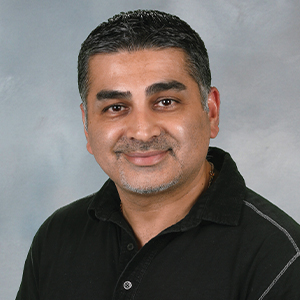
3. Dr. Sasha Khosravi
Pediatric psychiatrist and chief medical officer at Clive Behavioral Health, which offers pediatric and adult inpatient, acute and outpatient mental health care.
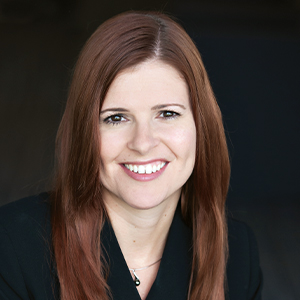
4. Amber Rand
Vice president at Orchard Place, which serves children through residential, outpatient and community-based programs.
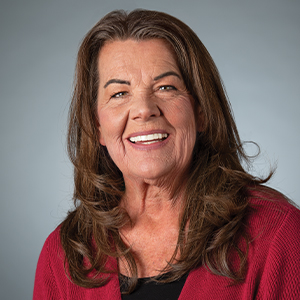
5. Pat Rogness
Vice president of behavioral health services at Children and Families of Iowa, which provides mental health services as well as domestic violence prevention and intervention, substance use treatment, and early childhood development.
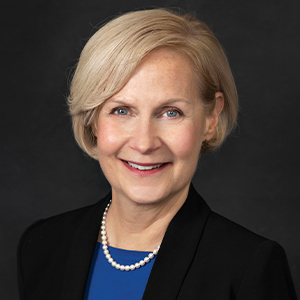
6. Dr. Teri Wahlig
CEO of ChildServe, which serves some 5,600 children a year through specialized clinical, home and community-based programs and services.
The following discussion has been edited for length and clarity; click here to view a recording of the entire event.
SUZANNA DE BACA: What data is there on the increase in and severity of mental health problems among young people, and what factors are influencing this increase?
DR. SASHA KHOSRAVI: Studies across the globe reflect the same thing: The rates of major depressive disorders, anxiety and suicide attempts are increasing across the board. The social isolation of the pandemic is a major factor, but you also have to look at other factors. For instance, a [recent] CDC study reports that rates of emotional abuse were up 55% since before the pandemic and 11% of kids suffered physical abuse. The study also showed that 44% of high school students have felt some sort of hopelessness.
Our rates of emergency room visits have escalated more than 30%. More than 50% of those are related to suicide attempts. We have a lot more kids waiting in emergency rooms, sometimes for days or weeks, for a bed to open across the state. And when we discharge someone, the wait time to get to a psychiatrist or a therapist has been progressively increasing over the past two years.
AMBER RAND: At Orchard Place, we’ve seen a large increase in referrals across all our outpatient and residential programs. We’re on par this year to have received more than 800 referrals to our residential program—about 100 more than last year.
The pandemic obviously disrupted routines and schedules. Before COVID, we were seeing youths who were doing fairly well at home managing their mental health. But due to this disruption, things have fallen off the rails and we’ve seen more kids in crisis.
Today’s high inflation rate is another stressor. When families are under strain, it affects the kids.
PAT ROGNESS: As a community member, grandparent and provider, I find it sad and scary that so many of our youths are suffering. In 2018, suicide for ages 10 to 24 was the leading cause of death, and it continues to be so today. In 2019 the National Health Foundation released data that showed that 1 in 5 high school students seriously considered suicide. The same foundation also released data that Iowa’s suicide rate is higher than the national average.
One piece that always concerns me is the increased violence in our nation and in our community. What we know about mental health or PTSD is that you don’t really have to be a part of that violence to have it affect you. You only have to be a witness to it. Our kids today are witnessing violence all the time.
The other piece that concerns me is the impact on marginalized communities because we know that in the Native American and the LGBTQ+ communities, the suicide data is even higher.
DR. TERI WAHLIG: We continue to see an increased number and severity of need for children who require mental health and psychological services. Specifically, there’s a new level of anxiety in the children we serve.
Children are a product of our environment. They absorb what we absorb, and they have far less-developed coping mechanisms and abilities to express their needs. At ChildServe, we serve children with intellectual and developmental disabilities who also have co-occurring mental and behavioral health challenges. That’s a unique combination. Children with developmental or medical complexities may not have been getting some of their routine care during the pandemic, along with experiencing the social isolation and educational challenges. Compounded with that is a decrease in Medicaid providers and staffing shortages.
DE BACA: One of the things we want to talk about today is hope and recovery. What are some recovery success stories you’ve seen?
KHOSRAVI: I work in the inpatient unit, where kids are suffering from the most extreme symptoms: suicidality, aggression, psychosis, mania, etc. When these kids walk in through our doors, they feel like no one can understand them. They have a sense of hopelessness. Their thinking is dark, their future is dark, everything is dark around them.
But with inpatient hospitalization, you’re with compassionate professionals and there’s no stigma involved. There’s also a sense of community. Patients get together with other children who are going through a similar experience and they realize they’re not alone; they see other kids who are showing resiliency and getting better. So a sense of hopefulness emerges organically.
ROGNESS: At CFI, we provide outpatient mental health and substance use services. We had a mom call in the other day who said, “My child asked me to find them a counselor that they could talk to.” So there are two things at work here: All the work that’s being done to try to destigmatize mental health is having an impact. The other piece is that youths are advocating for themselves.
WAHLIG: We had a baby admitted to the pediatric rehabilitation unit several years ago with a very complex medical condition. In fact, we weren’t even sure that she would survive. She also had a complex family and social situation and ended up in foster care. Because of all this, she stayed in our inpatient unit at ChildServe for several years. She was making progress with her physical challenges, but along the way, she developed behavioral and mental health challenges. So she began receiving mental health therapy.
Through that therapy, she was able to better identify her needs, understand her emotions, communicate what she needed to her caregivers, and advocate for herself. That really helped launch her trajectory forward. She has now been successfully adopted into a loving home and her future looks bright.
DE BACA: Andrew, I’m going to put you on the spot since YSS also serves youths. What are some success stories you’re seeing?
ALLEN: I take all the kids who graduate our adolescent addiction treatment program to breakfast or lunch. Recently, I took a young man to breakfast and invited the CEO of a business in town to join us. The CEO asked some questions and provided encouragement to the young man, who left breakfast standing a little straighter and more confident. The CEO followed up later that day; he said, “Hey, is he looking for a job?” And he connected this young man with the CEO of a business in Marshalltown.
Like the other residential providers represented here, youths come to us to be served. But then they go back home. When they do, they need an encouraging word. They need a connection. We’ve got to do everything we can as a community to wrap them around the services and support they need after they complete programs and residencies.
ALLEN: Can you talk about what it feels like for parents of youths who are in crisis?
RAND: By the time parents reach our residential treatment program, they’ve been through a lot with their child at home, at school and in the community. Many of them feel alone, scared and overwhelmed with a sense of helplessness and hopelessness. The constant worry and sleepless nights are impacting them and the whole family. We often hear about the entire family essentially being under siege because of how a youth’s emotional instability is affecting everyone in the household.
The other part is the stigma. Parents and caregivers feel like they can’t talk about their issues, as they feel no one understands them. They don’t know who to ask for help. Sometimes just having the youth come to a residential center can give families that moment to take a breath and regroup. And then hopefully, they will be able and willing to participate in the therapies and programming that the whole family needs in order to heal.
WAHLIG: Our front-line team members hear from families that they feel frustrated, powerless, desperate. It can be very isolating for parents. They run up against a lot of brick walls if they’re trying to access services. Our journey as providers, but also as community members, is to consider reaching out and connecting with these parents. Let’s build stronger connections with struggling families.
ALLEN: Let’s talk about the youths themselves. What do you sense it feels like to be a young person who is desperate and in need of services?
KHOSRAVI: That sense of hopelessness is really a key thing. They just don’t feel like anyone can walk in their shoes. Also, they lose interest in things and nothing gives them joy. So everything becomes really mechanical. In kids, depression and anxiety present differently than in adults. A lot of these kids become more irritable, there’s poor emotional regulation, and they start acting out.
One of my biggest teaching points to my medical students and residents is, “Do not label these kids immediately.” These are external behaviors of what they’re suffering inside. We need to stop labeling and instead seek to understand why they’re acting out.
So if there’s a sudden and drastic change in your kid’s behavior, don’t just write it off to normal adolescence. There could be some serious underlying mental health issues that need to be addressed.
ROGNESS: As we think about the world that we’re living in today, how is that impacting our youth? Safety drills in schools are necessary and important today, but my first-grade grandchild also knows that these are school shooting drills. Think about how that’s impacting their sense of safety and security. How does it feel for them? It feels very out of control and helpless.
DE BACA: How can parents learn about what kind of support to give their kids? And how can they take care of themselves at the same time they’re supporting their kids?
KHOSRAVI: In terms of parents giving support to kids, there are three factors that have been examined in a lot of studies, and they’re simple: physical activity, sleep regulation and social connectedness. These three important things have protective factors.
Also, make conversations about mental health part of your routine. If you do, your kid will be more likely to talk to you. If you only talk to your child when you think something is wrong or suspicious, they’re going to shut down and become defensive and guarded. But if you make their mental health a normal check-in and normalize that conversation, you’re much more likely to tap into their thought process. It helps foster that communication and destigmatize mental health.
RAND: I agree with trying to normalize the mental health conversation and encourage kids that it’s OK to feel sad, anxious and angry. Families talk about how you’ve got to have the sex talk with kids, but how about we regularly have the mental health talk?
ROGNESS: As we continue to destigmatize mental health, parents need to let go of shame and blame because often we internalize the stigma and say, “What part do I have in this? Is there something I did?” None of us are perfect parents, and there’s a lot going on in our world that is affecting the mental health of our children.
Reach out to community supports, extended family members, or somebody in school—a coach, a teacher, whoever that is—who can make a connection with your child. Sometimes others can relate to our children better than we can because we’re so emotionally reactive to what’s going on.
WAHLIG: Remember that children are growing and developing. Their developmental stage plays a huge role into how they process, interpret and react to whatever it is we put forward for them. Good nutrition and decreasing social interaction via digital connections are also important.
ALLEN: When you think about young people in recovery, what does it look like?
WAHLIG: It’s important to remember that the journey looks different for everybody, whether it’s their developmental stage, family situation or the particular issue they’re facing. As you begin to unwrap the mental, social and emotional challenges, the journey often starts to get more difficult before it gets better. So be prepared for some of those challenges as you unwrap the issue. But then we often see children start to identify their needs, ask for help and advocate for themselves. Then the journey starts to move forward, and they can work with therapists to gain skills that can help them through those situations.
ROGNESS: Recovery can be so layered. What’s underneath the behaviors and what’s happened to this child can be part of that equation. That means recovery can be a long-term process because life continues to happen and youths will continue to be triggered by different events.
ALLEN: What are some parting words you have about getting kids on the road to recovery?
KHOSRAVI: Within the context of the pandemic, the entire world got to experience some anxiety-related mental health issues. And with that, I’m hoping we can scrape the stigma off mental health a little bit more and that this allows families and children to reach out for help. I’m hoping that once they hold their hand out, we’ll be there to reach for that hand and pull them out on their journey to recovery.
RAND: Treatment works. It does get better, and recovery is possible.
ROGNESS: Believe in our youth and give them what they need. With hope and encouragement, recovery is possible.
WAHLIG: We know it can be sometimes difficult to find the road, but there are resources available. We live in a world of hope.
Getting Help
Click here for a list of some mental health organizations that serve Greater Des Moines.







